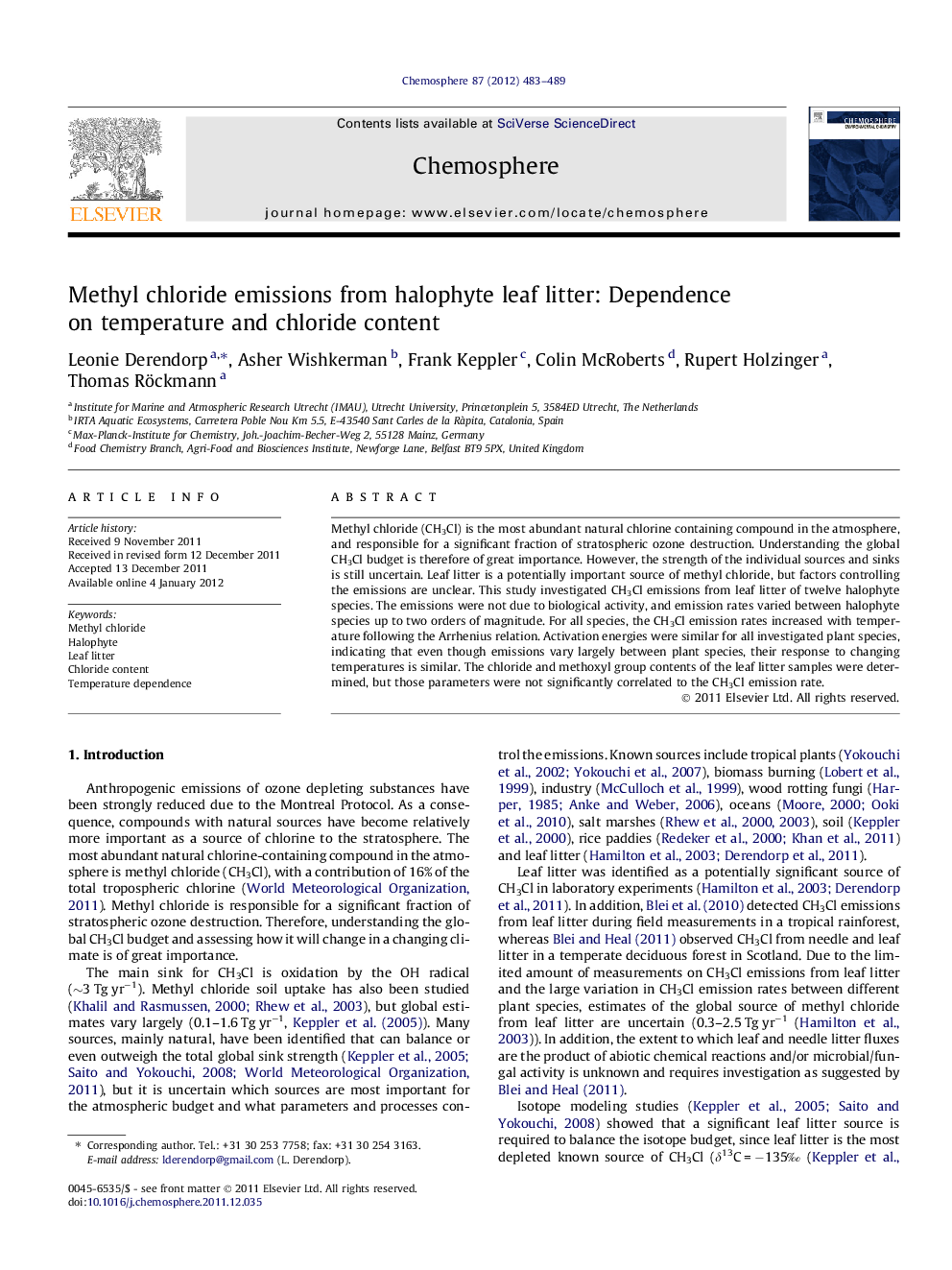| Article ID | Journal | Published Year | Pages | File Type |
|---|---|---|---|---|
| 4410217 | Chemosphere | 2012 | 7 Pages |
Methyl chloride (CH3Cl) is the most abundant natural chlorine containing compound in the atmosphere, and responsible for a significant fraction of stratospheric ozone destruction. Understanding the global CH3Cl budget is therefore of great importance. However, the strength of the individual sources and sinks is still uncertain. Leaf litter is a potentially important source of methyl chloride, but factors controlling the emissions are unclear. This study investigated CH3Cl emissions from leaf litter of twelve halophyte species. The emissions were not due to biological activity, and emission rates varied between halophyte species up to two orders of magnitude. For all species, the CH3Cl emission rates increased with temperature following the Arrhenius relation. Activation energies were similar for all investigated plant species, indicating that even though emissions vary largely between plant species, their response to changing temperatures is similar. The chloride and methoxyl group contents of the leaf litter samples were determined, but those parameters were not significantly correlated to the CH3Cl emission rate.
► Leaf litter of several halophyte species emits methyl chloride, but the emission rates vary largely between plant species. ► The emission rates were not correlated to the chloride- and methoxyl group content of the leaf material. ► The temperature dependence of the emission rates was similar for all investigated plant species.
